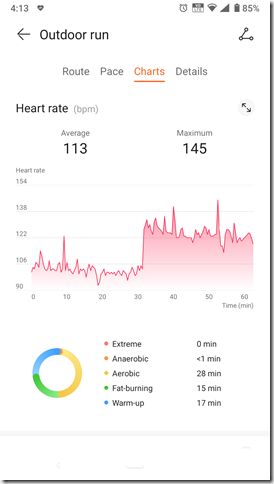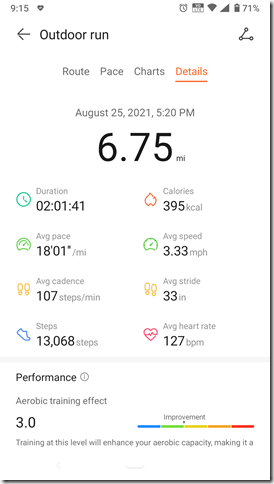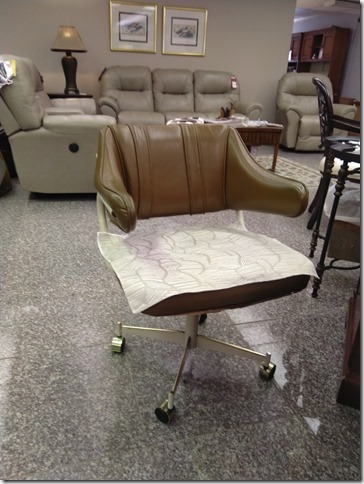Many nights, I perform a wind-down ritual with the cats, just chilling in the living room with the music going. Recently, that had transitioned to watching some TV on DVD – Simpsons, Futurama, and most recently, Frasier. But I even more recently found myself hooked on an old TV show called The Rockford Files. This show ran from 1974-1980 and was about a private investigator. In 1980, that mantle was passed to Magnum PI. Maybe I’ll make it there, but there’s like 125 episodes of Rockford Files to get through.
The 70’s. I grew up in it. I can’t say I was really old enough to appreciate much of what was going on, but to watch TV shows set in that time now is like watching Little House On The Prairie back in the 80’s. Watching a 70’s show is slightly nostalgic to me, but Rockford Files was an adult TV show, so I couldn’t really relate to what was going on if I think of myself back in the 70’s.
However, I am an adult now and I can compare being an adult now to being an adult back then. And it’s with reluctance that I say some things were better back then. But of course, some things are better now. Let’s do some pros and cons.
I’ll start with the biggest thing I love about how things were back then. No people. Imagine the population cut in half, or even more so. Imagine roads that weren’t packed with cars – 2-lane roads at that! Imagine going to Las Vegas and going to the pool and only about a dozen people there. If there’s one thing I hate about modern times, it’s all the fucking people.
Ok, now a con. No 911. No cell phones. Maybe this is really a pro, but it’s crazy in this police drama show that someone gets shot or hit by a car and people run to a pay phone, put money in it and call the operator to contact the police. That’s really how things were back then. And the reliance on pay phones, the lack of caller ID, the existence of pay toilets, it gives you a real shock to see people functioning like that. I can’t imagine not having my cell phone with me. If my car breaks down, what am I going to do? Go to someone’s house and ask for help? Flag down another car for help? Good luck getting any help or even not getting yelled at or assaulted.
Another con – smoking. It was big in the 70’s. It’s going to be a century before it finally goes away. Drinking was pretty acceptable, too.
A dual pro/con is the cars. They sure looked nice back then, but they were fucking massive and handled like shit. Car chases in the 70’s are a joke. And in a police drama, there’s at least one car chase EVERY episode. It’s interesting to consider how modern shows limit the outdoor scenes and mostly deal inside, where 70’s shows are like 80% outdoors scenes.
Then there’s the equal rights stuff. And I’ll give Rockford some kudos here. They show women and black people in positions of power. I am pretty sure it was still considered progressive at the time. But the show does suffer from the trope of the helpless, emotional woman who gets seduced by Rockford in many episodes. The dude lays his clients a lot – he gets paid to fuck. Glad to see this concept retired. However, speaking of progressive, the theme song has some 70’s Minimoog synthesizer lead lines – 10 points for that.
Ok, and to finish up the bullet points, the part that has gone unchanged. The police haven’t changed much at all. One line by a cop who was demanding Rockford get out of town sounded like it could be said today. To paraphrase, because I don’t remember enough to quote: "If we see you here again, we’re going to pull you over and while you’re reaching for your ID, we see you’re reaching for a gun, and it’s all over before anyone realizes a mistake was made." This is in 1974.
I’ll summarize my enjoyment of the show. The Rockford character constantly gets himself into bigger and bigger trouble throughout every episode. All the police hate him, doesn’t matter if they’re local, in the state, or across the country. He gets beat up a lot and throws a lot of punches himself. Aside from the necessity of keeping him alive for the show, that just wouldn’t happen today. He’d be dead in a drive-by shooting with no physical contact. Or simply shot with no chance to talk his way out of anything.
As you’re watching the show, you think, get your phone and take a picture – oh you can’t. Call the cops – oh you have to find a pay phone. Just text them really quick – oh you have to call and hopefully they’re home. Check the map – is there one for the current town in your glovebox? Wait, you can just walk into a business and talk to someone? You call a business, ask an actual person for a person that works there, and you get to talk to that person? You can walk through an airport? Hailing cabs? Going to a nice restaurant without a reservation? Walking on the sidewalk? "Computers" are esoteric devices used by massive companies and are shown as serious high technology.
It’s just everything that you do normally today that’s not available back then, and seeing things that stymie you today were a piece of cake back then. That’s the real wonder of the show, for me. It’s within my lifetime all this change happened. And yet, nothing in law enforcement has changed.



